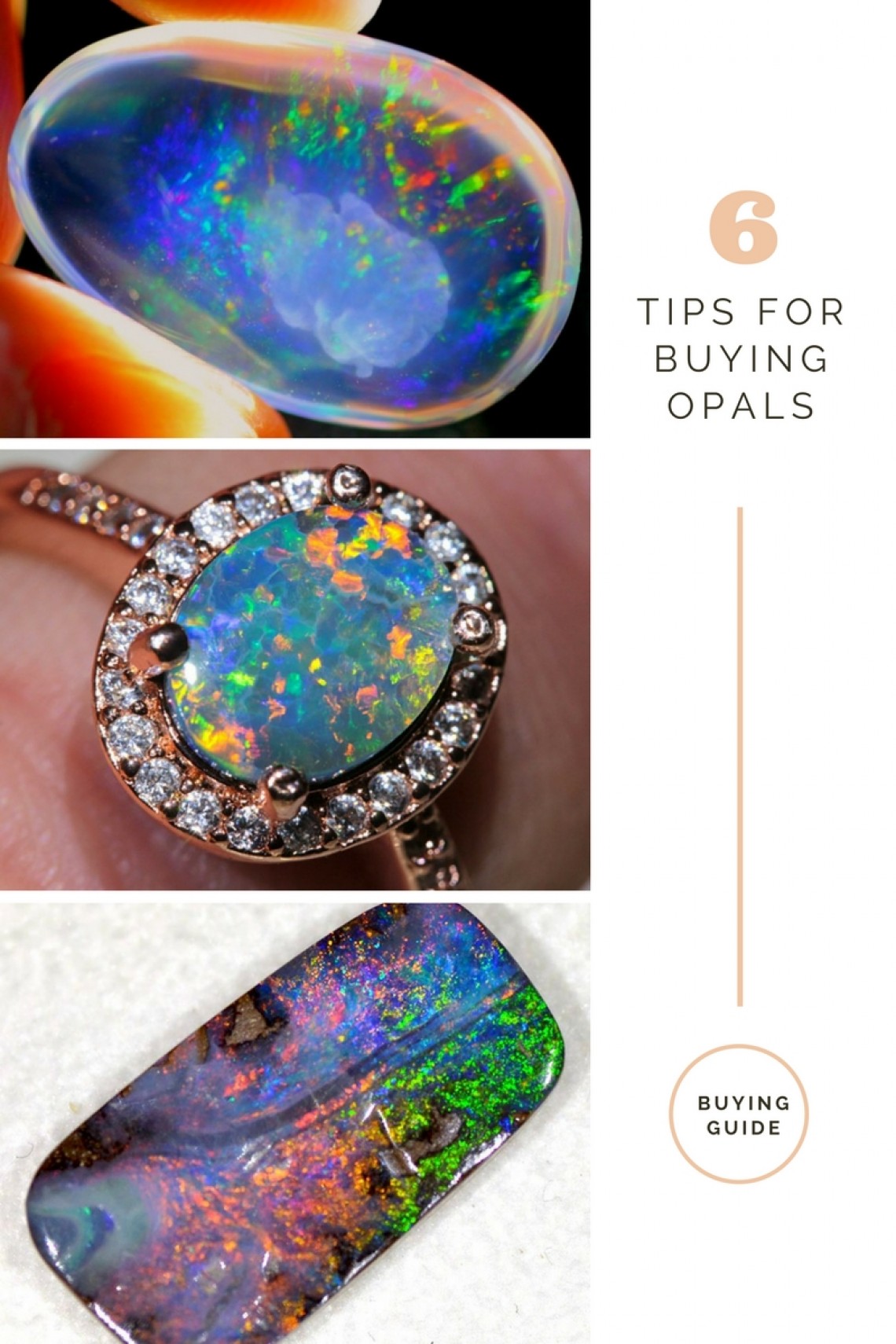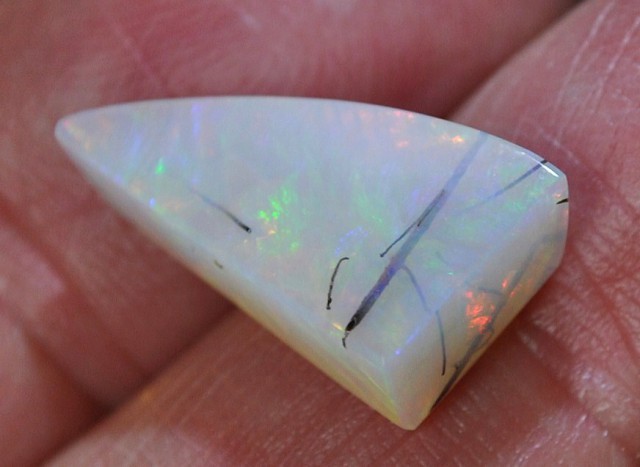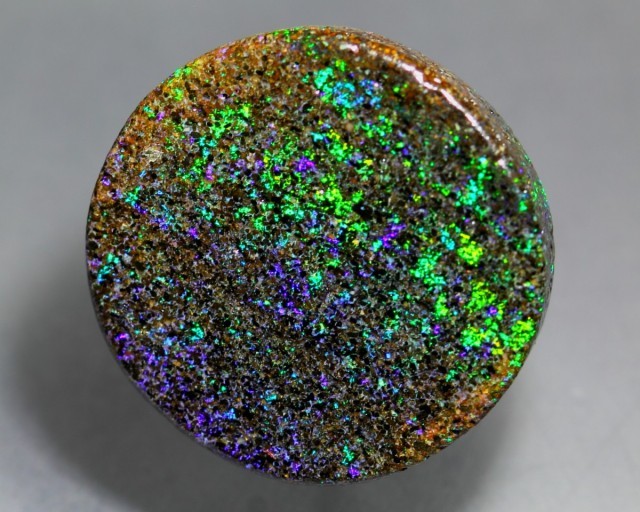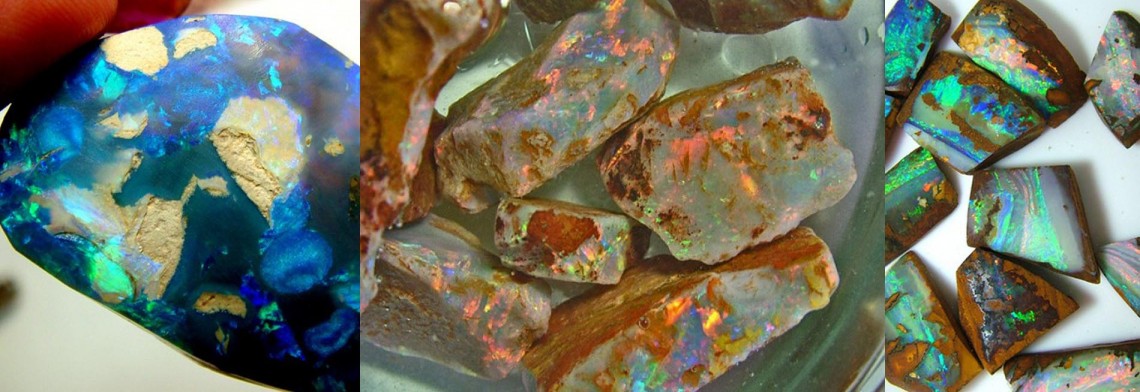
How To Buy Opals On The Internet
 You’ve found yourself in the right spot as the first step in buying opals online is to educate yourself with opal information. Opal Lovers all over the world have taken to buying Opals online as you can buy direct from the source.
You’ve found yourself in the right spot as the first step in buying opals online is to educate yourself with opal information. Opal Lovers all over the world have taken to buying Opals online as you can buy direct from the source.
It is best to find a site that has all types of sellers from opal miners in Australia to opal wholesalers and international miners or wholesalers. Many buyers have stated that buying opals on the internet is the best because sellers all over the world have to compete against each other in offering their opals for sale in a controlled online environment.
Opal miners have to price against other sellers so if a miner overprices his opals the will not sell. This is the main advantage for our buyers as sellers compete against each other driving prices down, something that single sellers online sites do not offer.
Tips To Buy Opals In The Internet
Learn about the different types of opals as the value of an opal depends not only on its brightness but where it comes from. Start Learning here.
Understand the difference between triplets, doublets and solid opals as the first two are enhanced to show brighter colours. They should sell for lower prices than solid opals.
Always request a picture of an opal on a hand or a neutral image as a black background will enhance the colour. Many crystal and Ethiopian opals look better on a black background.
With Black opals ask for their body tone and brightness rating.
Most opal rough photos are taken when the opal is wet. Water enhances the brightness of the colour but it should give an accurate idea of what the stone will look like when it is polished. If the rough boulder opal has been split it should not need water to display its colour because the split is usually very clean.
Ethiopian rough is normally dry when pictures are taken as it is Hydroplane Opal. This means it absorbs moisture.
Base Body Tone Guide
The base body tone guide is the best kept secret for buying opals on the internet, as most internet sellers give a fairly accurate description of the stones body tone that they are selling.
The opal association is marketing a body tone guide with opal stones and doublets so all buyers and sellers can have a uniform guide to gauge opal. These will help buyers compare opals between sellers. You should always buy off a seller who guarantees his product and grading so if you disagree you can return it.
The base body tone refers to the darkness or lightness of the opal ignoring the play of colour and brightness of the stone. The base colour can only be determined by looking down on the top of the stone and ignoring the material on the back of the stone. Only those stones ranking N1 to N4 are considered black opals. The opal price is determined by body tone, brightness, colour, play of colour, size and allowing for faults and imperfections.
See an example of an opal buying guide below:

Brightness
The brightness of a stone is one of the most important factors in a stones beauty and value.
On the Australian opal fields you don’t hear the words” fire” used when miners talk about how bright a stone is. The term is however used a lot on the internet to describe a stone’s brightness, and to gauge opal brightness evenly over different stones.
Brightness Scale: 1 Faint, 2 Dull, 3 Bright, 4 Very Bright, 5 Brilliant - Gem Quality This is the brightness chart you will see on most internet auctions with 5 being the brightest. Currently the Opal association is working on a chart which will have seven levels of brightness with number ONE being the BRIGHTEST. Check on listings to make sure what chart is being used.

Opal Colors are affected by Light! Adjust Your Monitor for Accurate Colors + Contrast!
Your Opal will look different in different kinds of lighting. What color are seen, in what shape or pattern and from which viewing angles depends, in part, upon the viewing light used. Sunlight and tungsten bulbs and warm bulbs lighting will tend to bring out more warm tone colours - reds, oranges, yellows magentas and purples. ‘Cooler Light’, like viewing your Opal in the shade, will tend to bring out the cooler greens and blues. Light source. For viewing we suggest 12” to 16” from a bright tungsten light bulb. The best method is to have your back to a window on a sunny day with the sunlight coming over your shoulder.
Opal Sizes
Opal sizes are listed in millimetres (25.4 mm = 1 inch) and weights are listed in carats - just like all other gemstones and the jewelry mountings for them A calibrated shape gemstone should fit most jewelry mountings designed for those dimensions. An opal that is within 0.5 to 1 mm of a calibrated size may acceptably fit into many calibrated mountings. Calibrated shape opals typically cost 15% to 50% more than a freeform shape opal due to the wastage of the opal when cut. A freeform or larger size opal can be cut to a smaller size by an experienced cutter. Or you can have a custom jewelry mounting made for your unique opal, often for less expense than you might expect. Thickness of the opal is a major factor in the carat weight of a precious opal gemstone - but an opal that is unusually thick will be considered less valuable as it may have to have excess weight removed to fit in a jewellery piece.
Play of Color
The very best precious opals have play-of-color across the entire gemstone when rotated. Most precious opals do not have play-of-color across 100% of the gem and are still stunning. Every natural precious opal gemstone is unique. Some precious opals have a flash, a Harlequin or other unusual pattern, rainbows, ribbons of color or many variations that are both beautiful and stunning while not covering 100% of the opal’s face. If an opal doesn’t have Play-Of-Color, it isn’t precious opal. Sometimes an area of the opal will have a Play-Of-Color flash from a particular viewing angle, while another area of the opal flashes best at a different viewing angle. You may have to rotate or pivot the Gem Stone and/or change positions between you, the opal and the viewing light to see Play-Of-Color from a particular area of many opal Gem Stones. These stone are directional and are usually best suited to a pendant. The most expensive opals have at least some wonderful Play-of-Color from most viewing angles. Sometimes an opal is at its best if lighted from the side or from slightly ‘above’ which would make it an ideal opal to use for a pendant. Some opals are at their best and brightest ‘face up’ - when the viewer has the light source over her shoulder to view the opal face-on like a ring stone. Some of these patterns can EXPLODE and look stunning.
Visible Opal Flaws
Listed here are some of the natural imperfections that can reduce the value of your precious opal. If you can accept these natural imperfections, you may be able to purchase an opal you otherwise couldn’t afford. And, the ‘natural imperfections’ are proof that the opal is not man made!
A whitish to cream color area visible within your opal’s surface is often called ‘clay’ or ‘silk’ or ‘sand’, small bits of clay present when the opal was forming.
A ‘Matrix’ opal that has precious opal surrounded by visible rock or clay it formed within will be less valuable than a solid opal or most quality constructed doublets.
Potch lines across the colour face are acceptable provided they aren’t contrasting with the stones appearance. Most black gems have some potch in the face which doesn’t stand out but grey potch on a black stone would so it would decrease its value.
Sometimes a line inside the opal is just how the opal naturally formed and not a crack or flaw. Hold it close to a lamp shape to see it you can see a fractured reflection. If large areas of your opal have no precious Play-Of-Color (sometimes called ‘potch’), that will reduce the value of the opal. If there are visible scratches on the surface of the opal, its value will increase after the opal has been professionally polished to remove them. Cracks that go through the thickness of the opal’s surface will reduce its value. To save a damaged valuable precious opal keepsake, cracks can sometimes be repaired and no longer be visible to the unaided eye. Any seller of precious opals should always tell the customer if an opal has been repaired, stabilized or otherwise treated.

Opal Photography
It must be remembered that opal reflects light and digital cameras are not built to capture the amazing patterns and colour changes in opal.
A simple experiment is to place a stone on the floor by a doorway in natural sunlight, and move the stone back inside taking several photos along the way. You will most likely find that one photo looks amazing as if it has been enhanced.
Depending on the quality of photographic equipment and lighting sources, there will always be some variation between a digital photo and viewing a stone with a naked eye.
Sellers on are expected to produce consistent photos that are representative of the opal being sold. Viewing an item that has a video can be a good way to reveal the many different faces of a good quality opal, and see the movement of colour that is not necessarily visible from all angles.
The experienced buyer will know to take all information into account, including the N tone rating, brightness, shape, dimensions and of course price.
The most common complaint is for blue opals. Most cameras capture the mauve in the stone which the naked eye can’t see. So if you see a mauve stone remember it’s most likely a blue stone.
Pastel colours seem to come out true to form. With Ethiopian opal the red is easy to capture and it will not be as bright in the hand.
If a seller guarantees his stock there is no advantage in over enhancing the pictures as he would have to return too much stock.
Many sellers use a black background as the camera captures the opalat its best. Always ask for a photo taken in the hand. You can see the two stones below look better in the hand shot which is more natural. The last picture has been enhanced so you notice how the hand looks red and less natural. If you see a hand looking red you know the picture has been enhanced.
Viewing an Opal
With the opal in your hands, viewing in direct sunlight or 12”-16” from a bright tungsten or halogen light source:
Rock the Opal side-to-side and top-to-bottom - pivot the Opal gemstone - rotate it 90 degrees clockwise and repeat, - then again.
Change the angle between the light source, the opal and your eyes and repeat. Rock the opal side to side or top to bottom to change the viewing angle.
Harlequin Patterns
Harlequin opal is the most sought after pattern in opal due to its rarity and beauty.
On the Gemological Institute of America (GIA) website, it states: “Harlequin or mosaic - broad, angular, close-set patches of color”.
Originally rounded or floral shapes were not called harlequin but this is now common practice.
On some unscrupulous internet sites many stones are listed as harlequin as the seller believes this will increase its value. Many of these stones would not be called harlequin on the opal fields, however they can still be beautiful and valuable in their own right. It is always important to buy from an opal expert.
In my 20 years experience of selling thousands of stones, I have only had three opals which I consider to contain a true harlequin pattern.

Doublet or Natural Stone?
It is difficult to determine if an opal is a doublet when it is set in jewellery. Only by removing the stone from the jewellery can you be certain.
Take a 10 powered loop or magnifying glass to the side of the stone. As glue doesn’t polish you will see a gap between the crystal and backing so you know it’s a doublet.
Alternatively, if you have a digital camera you can take a photo of the side of the stone and enlarge the photo on your computer. If there has been glue used it will be easy to see. See our article on doublets and triplets to learn more.
Inclusion or Fracture?
Some times stones have natural inclusions that look like fractures. The best way to determine if a stone is fractured is to hold the stone up to a base of a lamp shade and roll the stone in your fingers keeping the stone in the light and not the shaded area. If there is a fracture you will see the light reflect off the fracture like a chip in your windscreen.
Natural or Synthetic Stone?
Some synthetic or imitation opal can confuse customers.
Things to watch for:
Usually they have no inclusions or potch backing behind them
The pattern appears to be even through the stone which is rare except for top gems.
If viewed from the side the line of colour is in the lower areas.
Unnatural look and fire to them.
Synthetic opal are sometimes used in triplets which are much harder to spot. Generally they are very bright with a regular pattern that looks too constant to be natural. It is best to become familiar with a few man made opals (usually advertised as synthetic or man made) so it is easier to recognize them.

Andamooka Matrix
Andamooka Matrix is a natural white opal matrix found in Andamooka, South Australia. It has been treated to look like expensive black opal. The treatment is permanent but if you reshape or cut it you will have to re-treat it.
Some of this material is called concert which is more porous than the gem matrix. It is hard to get a good polish on it as it has pores. You can use a resin like liquid glass - or in Australia we use HX3 made by Shell. This is an epoxy that soaks in to the stone and gives a good polish. The colours and fire are amazing.
On the field they call this concert which is a horrible name for such a beautiful stone. Gem matrix, which you can get a natural polish on sells for $10 - 50 per carat while concert sells for $1- 2 per carat for larger stones.
Andamooka Matrix is even great just left in a glass jar as a dazzling specimen.

No Reserve Opal Online Auctions
No reserve opal online auctons are a great entry point for new opal buyers, as the buyer can determine the price at which the item sells. This is generally a good indicator of the value of the item.
Of course, the cost to the seller to list a $1 No Reserve item is going to be more than one dollar, once fees, buyer communication and shipping costs have been added to the price they paid for the item.
For this reason sellers have been known to list a great variety of high quality items to ensure a good selling price, and build up their loyal repeat customer base.
Rough Opal
Buying rough opal is always a bit of a gamble as you can’t really see the quality of the precious opal within.
You can lessen the risk if you buy “rubs”. Opal rubs are pieces of rough that have been rubbed down to the colour bar so you can get some idea of the stone it will cut. There is still the risk of inclusions in the stone which may make it smaller than you expect.
Most sellers on the internet wet the rubs or rough before hand to show the colours you can expect when it is polished. Always check the thickness of rubs as if it is too thin it won’t be strong enough for a ring. Any stone around 2 mm thick is too thin and may even need reinforcing in a pendant.
You shouldn’t expect to see a good stone in cheap rough as no seller would deliberately leave it there, however some beautiful stones have been found in rough that looked as if it contained nothing.
Black nobbys from Lightning Ridge are known for there surprises as even the most experienced dealers let some stones slip through in there rough grading process. Nobby rough untouched should always be viewed as a gamble.
With white opal rough it is a rule of thumb that what you paid per gram should cut that per carat as a finished stone.
Buying rough from photos is always difficult so you should check the sellers return policy. If they don’t offer one you should consider taking your business elsewhere. It is generally accepted that if you rub, snip or touch the rough it is considered sold.
Most internet sellers want your repeat business so even if you are not happy with what you have cut you can always ask for a bonus.

Trivia & Tips
All items should be compared in the same lighting with no natural lighting to make comparisons. 100 watt globe 20 inches above stone recommended.
Have a set of stones to compare what you are grading. Many buyers bring their own stones for comparison to the opal fields.
If you are buying at Lightning Ridge in the motel there is strong sunlight in the morning so many sellers try to use this to their advantage.
Buy from reputable verified sellers, not hobbyiests advertising themselves as experts - common place practice on other auction sites.
On the opal field a clean stone with a N1 background and a brightness of 5 will sell very quickly for top money.
Check a sellers return policy and stock guarantee. When returning stock use registered post.
It might pay to test the waters with a seller on cheaper items if you are interested in purchasing an expensive stone.
The buyers on the internet have a big influence over the shape of the industry. If they return over enhanced stones back to sellers, they will be forcing sellers to more accurately classify their stock so all sellers are on an equal playing field, and it will be easier to compare stock between sellers.
The future is exciting for the opal industry. This beautiful stone is now available at competitive prices to buyers who would normally not have access to it.
The gemstone industry has many levels of dealers but the internet allows you to go direct to the source. New cameras will more accurately capture the true colours of opal and there will be evolving video technology that will allow you to see a stone as if it was in your hand.
With some knowledge there are bargains to be had today. Good luck with your bidding.
SHOP FOR OPALS
Search the Opal Encyclopedia
Related Auctions
Related Articles
Australian Black Opal is one of the rarest gemstones on earth. It has every color of the rainbow on a black ground which makes the colors dance.
8th May 2018
Boulder Opal is one of the most undervalue opals valuable on the market. Learn more about this unique opal and browse the beautifully stones we have for sale.
29th May 2019
Latest Articles
An opal’s price comes down to a variety of factors, all of which we’ve broken down in this guide to opal grading and prices. Learn all about opal grading and the prices of each type of opal!
19th Jul 2023
Come on a journey and learn about the healing power of opals from our guest writer Vivien Schapera from Crystal Healing Techniques!
20th May 2023
The Flame (or Fire) Queen opal is the world’s most expensive opal, sold for the modern equivalent of $3 million dollars. Learn all about its history and qualities!
18th Feb 2023
Article Categories
All there is to know about Opals including Black Opals, Ethiopian Opals & Boulder Opal
15 Articles
Check out our fascinating information and articles on all things amazing in the Opal world
43 Articles
Opal Auctions sellers who are approved as opal Verified Sellers
4 Articles








